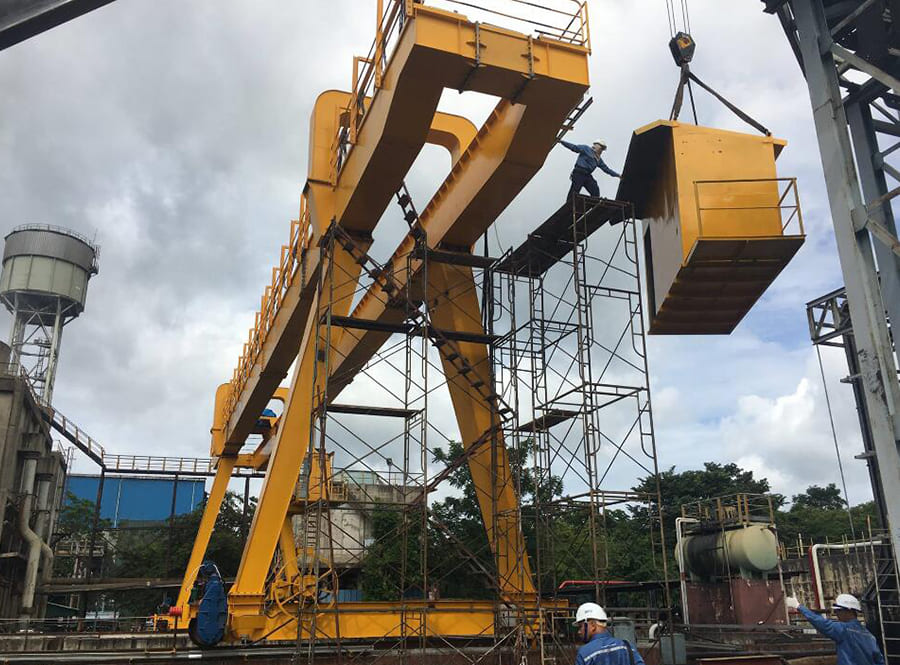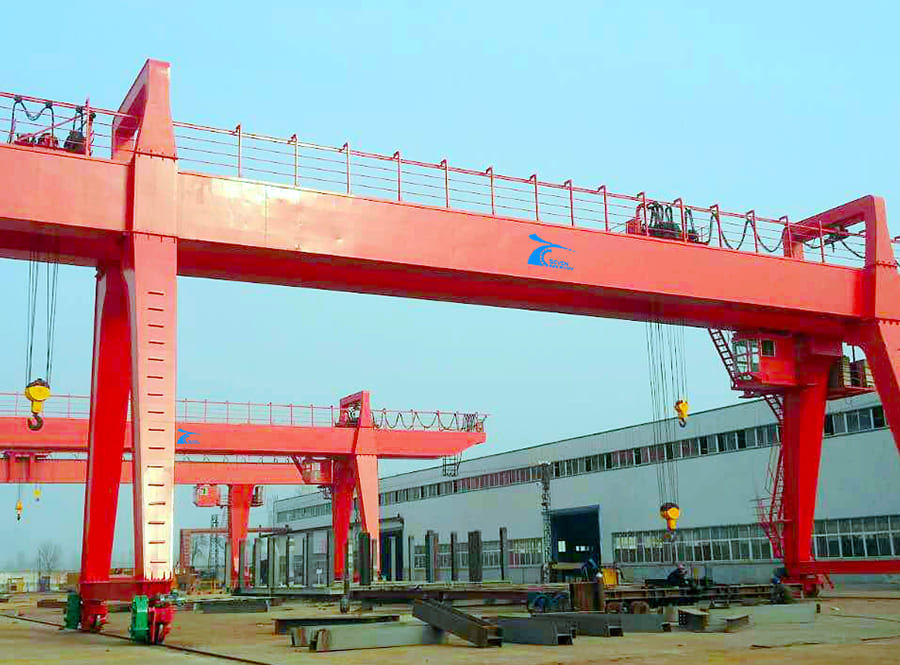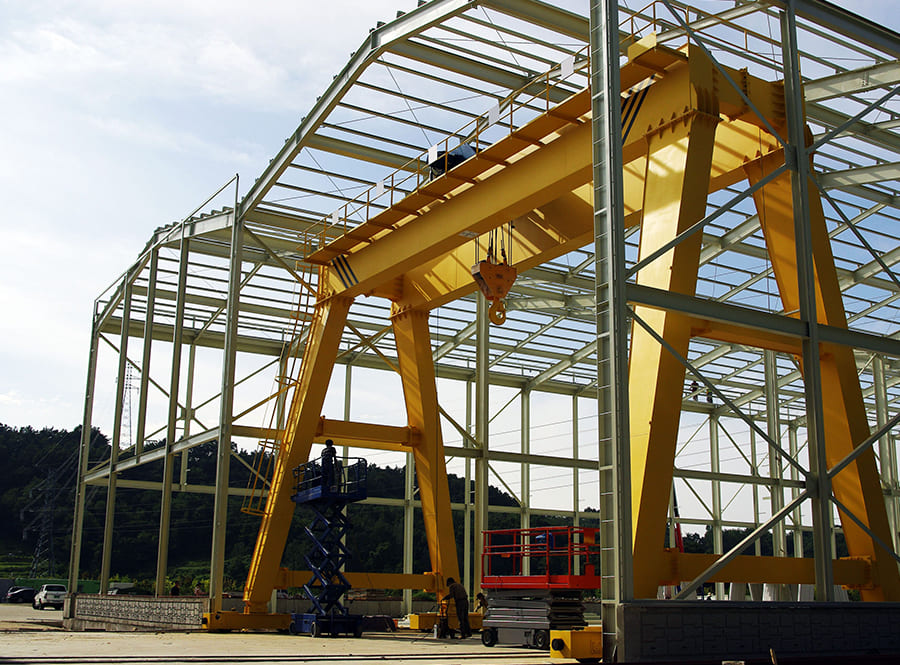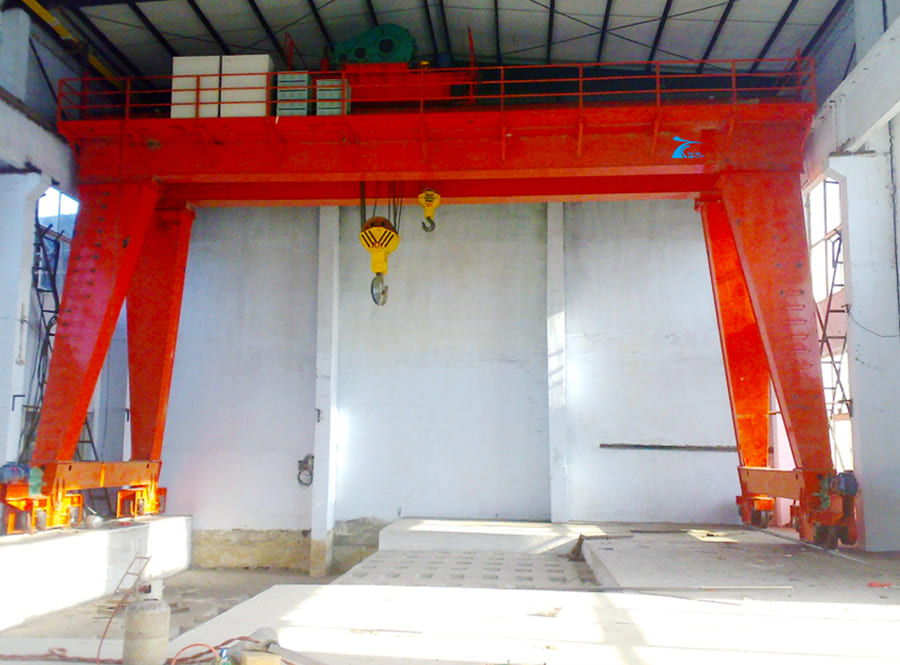Double girder bridge cranes are robust and versatile lifting machines widely used in industrial settings. They provide a reliable and efficient solution for handling heavy loads and performing various material handling tasks. This article explores the features, benefits, and applications of double girder bridge cranes.

Design and Structure:
Double girder bridge cranes consist of two parallel bridge girders supported by end trucks on either side of the crane runway. The girders are connected by a trolley, which travels along the length of the bridge. A hoist is mounted on the trolley for lifting and lowering loads. The structure provides excellent stability and load-bearing capacity, making it suitable for heavy-duty lifting operations.
High Load Capacity:
One of the primary advantages of double girder bridge cranes is their ability to handle heavy loads. They are designed to lift and transport loads ranging from a few tons to several hundred tons, depending on the specific configuration. This makes them ideal for applications in industries such as manufacturing, steel, construction, and shipbuilding.
Increased Hook Height:
Double girder bridge cranes offer greater hook height compared to single girder cranes. The higher hook height allows for lifting loads to higher elevations, enabling efficient stacking, assembly, and storage of materials. This feature is particularly beneficial in facilities with limited vertical space.
Smooth and Precise Operation:
The design of double girder bridge cranes ensures smooth and precise operation during lifting and movement of loads. The dual girder configuration provides enhanced stability, minimizing sway and swing. The trolley and hoist systems are equipped with advanced controls, allowing for accurate positioning and precise load handling.

Versatile Applications:
Double girder bridge cranes find applications in various industries and tasks, including:
Manufacturing and Production: They facilitate the handling of heavy machinery, equipment, and components during the manufacturing process.
Steel Industry: Double girder bridge cranes are commonly used in steel plants for lifting and transporting steel coils, plates, and beams.
Construction Sites: They assist in the construction of large structures by lifting and positioning heavy building materials.
Ports and Shipping Yards: Double girder bridge cranes are employed for loading and unloading cargo from ships and containers.
Safety Considerations:
Safety is of utmost importance when operating double girder bridge cranes. Some key safety considerations include:
Regular inspection and maintenance of the crane to ensure proper functioning.
Compliance with load capacity limits and safety guidelines specified by the manufacturer.
Proper training and certification of crane operators and riggers.
Implementation of safety features such as limit switches, anti-collision devices, and emergency stop systems.
Konklusjon:
Double girder bridge cranes offer a robust and efficient solution for heavy lifting and material handling operations. With their high load capacity, increased hook height, and precise operation, they are well-suited for various industrial applications. By adhering to safety guidelines and proper maintenance, users can ensure safe and productive operations with double girder bridge cranes.





















